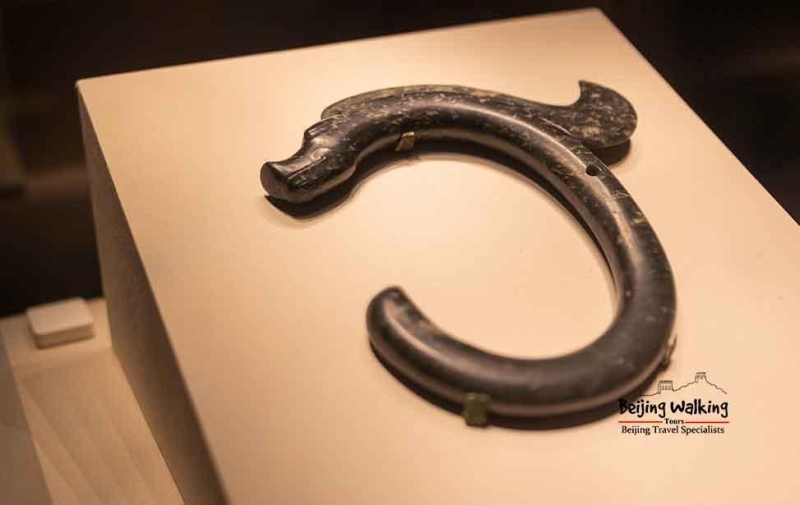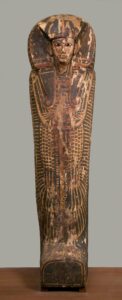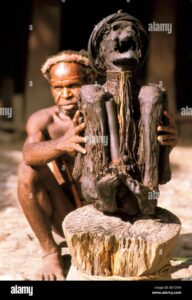
The world of archaeology was recently set aglow by the magnificent discovery of a massive Hongshan jade dragon in a Neolithic tomb. This heralds a previously undreamed-of connection between lore, history, and the vibrant Hongshan culture that thrived during China’s Neolithic period.
The tomb, originating from a time lost to memory, revealed an exquisite artifact, its depth of detail astonishing researchers and enthusiasts alike. The jade dragon, remarkable and imposing in its size, signifies a wealth that extends beyond mere material possessions, hinting at the rich spiritual culture that characterized Hongshan society.
The Hongshan Culture
The Hongshan culture, noted for its jade artifacts, left an indelible imprint on China’s Neolithic period—an era marked by the development of settled communities and the dawn of agriculture.
Unearthed jade artifacts, characterized by their intricate workmanship, hold clues to the Hongshan people’s beliefs, traditions, and craftsmanship. Every object uncovered offers a new glimpse into this ancient civilization, their feats, and their rituals; the Hongshan jade dragon, in this regard, is no exception.
The Significance of Jade
Jade held a distinct position in the Hongshan society. Cherished for its beauty and symbolic significance, it was the material of choice for spiritual artifacts. The mystique of jade, its cool touch and captivating green hue, embodied the connection between heaven and earth in the eyes of the Hongshan people.
Moreover, the time and effort lavished on jade artifacts talk volumes about the societal importance of these items. The recent discovery of the massive jade dragon emphasis this notion, portraying how expertly the Hongshan people worked the tough stone to create symbols of their faith.
The Hongshan Jade Dragon – A Historical Masterpiece
Expertly carved, the jade dragon found in the Neolithic tomb reveals a level of artisanship that is little short of astounding. Shadows of the dragon motif later found prominence in Chinese culture, marking this artifact as an early indication of the dragon symbolism.
Celestial and resplendent, the massive jade dragon mirrors the Hongshan people’s reverence to nature and their yearning for the divine. This discovery reaffirms the vital role that dragon mythologies played in shaping the psyche of ancient Chinese cultures.
Unboxing The Past
Remarkable finds like the massive Hongshan jade dragon reminds us of the human urge for the eternal that transcends time. The intricate patterns skilfully etched on jade surface are not only aesthetic triumphs. They also shed important light on our ancestors’ aspirations and the artistic legacy they left behind.
At the end of the day, the Hongshan jade dragon is not just a stunning piece of antiquity, but also a vital historical document. It whispers of an epoch that was, generously sharing stories of our forebears and their unmatched artistry.
Conclusion
The discovery of the Hongshan jade dragon brings forward an exciting chapter in the annals of archaeology. Like a voice from the past, it allows us a closer look at our ancestors’ lives, their beliefs, and the symbols they held dear. It stands as a historical testament, etched in jade, of a period long gone but not forgotten, thanks to these enduring remnants of a time that was.





